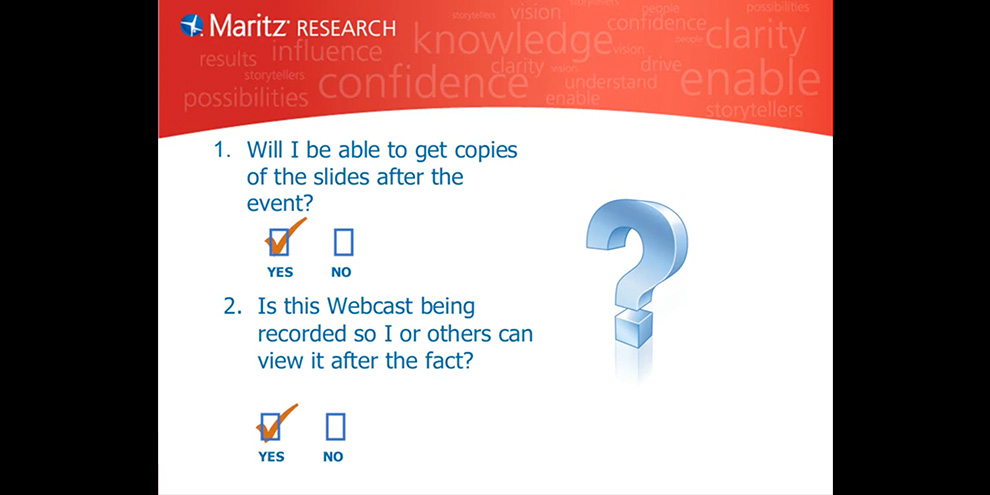Using Neuroscience to Improve Marketing Research
Editor's note: Maritz Research did a webinar on a customer satisfaction case study using neuroscience to improve marketing research on July 20, 2011. Duration 58:03.
Neuroscience. It's the industry buzz, but can it really be used to enhance marketing research
Join Quirk's Marketing Research Review and Keith Chrzan, senior vice president and chief research officer, Maritz Research, as he level-sets the current use of neuroscience in marketing research and explains why researchers should be neuro-cognizant by staying current with neuroscience discoveries with an eye toward identifying how those discoveries could impact marketing research. Chrzan contends that knowing how the brain works (and how it doesn't work) can provide insights to the ways researchers design, analyze and report marketing research studies.
During his presentation, Chrzan showcases "Make or Break Customer Satisfaction" - a new and innovative research model that uses neuroscience findings at its core and challenges traditional thinking. Customer satisfaction studies have long used "derived" importance models which assume a linear, compensatory relationship between performance attribute inputs and overall satisfaction outputs. However, findings from the field of neuroscience suggest that instead, people often make cognitively simpler non-compensatory judgments. The new Make or Break Customer Satisfaction approach successfully accounts for a non-compensatory customer satisfaction process, without complicating the respondents' task and while providing significant and large improvements in predictive validity.
Chrzan uses a case study and results from 22 other empirical studies by Maritz Research to illustrate important strengths of the Make or Break Customer Satisfaction model such as: the model tells a more insightful and compelling story about how performance attributes influence overall satisfaction; the model explains overall satisfaction better than standard linear satisfaction models (i.e. it significantly improves R-Squared), and the model is robust, delivering these benefits in every one of 23 models analyzed so far.
Key takeaways:
- The current relationship between neuroscience and marketing research.
- How neuroscience findings can be used to enhance marketing research.
- An understanding of the Make or Break Customer Satisfaction Research model.
- Case studies explaining benefits of the new approach.
Presenter:
- Keith Chrzan, senior vice president and chief research officer, Maritz Research.
